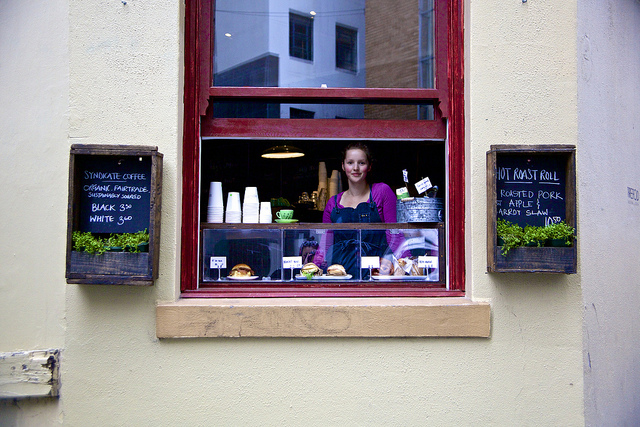Unlock the Magic in Your Story Now
Get the Free 20 questions to Ask Before Launching Your Idea workbook when you sign up for occasional updates.
Get the Free 20 questions to Ask Before Launching Your Idea workbook when you sign up for occasional updates.
Problem Solving 2.0
 Think of any one of the myriad of challenges you might face this week. Deliveries are taking longer than expected. There’s a rise in customers complaints. The new product isn’t selling as well as you’d hoped. Your team isn’t gelling.
Think of any one of the myriad of challenges you might face this week. Deliveries are taking longer than expected. There’s a rise in customers complaints. The new product isn’t selling as well as you’d hoped. Your team isn’t gelling.
The solution to almost every problem usually begins with the same question.
How can we get better at this? Nine times out of ten this is the wrong question to begin with, because often what you’re aiming to improve isn’t the real cause of the problem. The better place to start is by asking; What’s the simplest route to the outcome we want?
We fix what’s broken by getting crystal clear about exactly where we want to go—not by obsessing about what we think is in the way.
Image by Nicholas Canup.
Share this article
What Makes Or Breaks A Business?
 When we think about business successes or failures we focus on the highs and lows—the news-worthy triumphs or missteps. These are the moments in which we believe businesses are made or broken. Our theory couldn’t be further from the truth.
When we think about business successes or failures we focus on the highs and lows—the news-worthy triumphs or missteps. These are the moments in which we believe businesses are made or broken. Our theory couldn’t be further from the truth.
Businesses succeed or fail on an ordinary Friday afternoon when a difficult customer calls just before closing, and the minute we hire that receptionist we’re just not sure about. Businesses win in trying moments when ‘the rules’ are replaced by the right thing to do, and lose the second we prioritise process over humanity.
We win when we stop thinking about winning at all, and instead, embrace the equilibrium of doing our best work on the dull days when no one is looking.
Image by Matt Biddulph.
Share this article
Aligning Your Ducks
filed in Strategy
 The manager at the burger bar works hard to manage his costs. Part of his strategy is to pay his teen workers below minimum wage. He realises he can save on salaries by cancelling their shifts within an hour’s notice on a slow day. The thing that frustrates him the most is his high staff turnover.
The manager at the burger bar works hard to manage his costs. Part of his strategy is to pay his teen workers below minimum wage. He realises he can save on salaries by cancelling their shifts within an hour’s notice on a slow day. The thing that frustrates him the most is his high staff turnover.
The cafe owner in the park employs people who have previously found it challenging to find work. He provides training and weekly mentoring to each team member—ensuring they’re on track to meet the goals they’ve set themselves. His staff love working there, and it shows, not just because they turn up, but in every interaction with customers.
A good business strategy isn’t just about having all your ducks in a row. It’s about the care you take when choosing which ducks to include and your understanding of how each one impacts your story and success. Aligning the ducks is the easy part.
Image by Bilb.
Share this article
Are You Pressing The Right Buttons?
 The guy who knocks on the door at 5 pm is armed with an iPad, a sales pitch and an assumption. He denies he’s trying to sell something. ‘It’s not a sale—it’s a reduction.’ He asks if I’ve looked at the back of my power bills lately. Tells me the prices have risen and he’s just switched a couple of neighbours in the street who wanted to avoid the increases, to his company. When I explain how happy I am with my energy provider, he presses on, mentioning price twice more as the reason people are switching. The assumption being that every person he speaks to will be motivated by price regardless of their experience—that everyone shares a similar worldview.
The guy who knocks on the door at 5 pm is armed with an iPad, a sales pitch and an assumption. He denies he’s trying to sell something. ‘It’s not a sale—it’s a reduction.’ He asks if I’ve looked at the back of my power bills lately. Tells me the prices have risen and he’s just switched a couple of neighbours in the street who wanted to avoid the increases, to his company. When I explain how happy I am with my energy provider, he presses on, mentioning price twice more as the reason people are switching. The assumption being that every person he speaks to will be motivated by price regardless of their experience—that everyone shares a similar worldview.
The salesman is doing his best within the limitations of the strategy his company has adopted. What this energy company doesn’t know about the potential customer (practically everything apart from where they live), affects their success rate. The story the company is telling today leaves it open to being easily disrupted by a new, cheaper competitor tomorrow.
If your growth strategy relies on pressing your customer’s buttons, then it pays to know which ones to press. The flipside, of course, is that if you’re just differentiating and competing on something that requires less insight and effort, then it won’t be long before someone else uses a similar strategy. The harder a story is to replicate the more valuable it is.
Image by Thomas Hawk.
Share this article
The Value Of Fixing The Root Of The Problem
filed in Storytelling, Strategy
 The first step to fixing any problem is to acknowledge there is one.
The first step to fixing any problem is to acknowledge there is one.
If you find yourself starting every email with ‘sorry’, question why you’re constantly doing that.
If the software doesn’t work the first time, every time, dig deeper before you need to use it again.
If your projects always run over budget look for patterns that reveal the holes in your estimates.
If deadlines consistently allude you be honest about what you need to do to change that.
The simplest way to create exponential value is to make promises you intend to keep and then to keep them. You know from experience hardly anyone does this. Promises are often hastily made and casually broken. Find a way to be the exception and not the rule.
Image by Tobias Toft.
Share this article
A Simple Truth About Business Growth
 We’ve all seen what happens when a business is poorly scaled. The cult restaurant adds more tables and loses its magic. The software is ruined when too many features are added. The bespoke tourist attraction becomes tacky.
We’ve all seen what happens when a business is poorly scaled. The cult restaurant adds more tables and loses its magic. The software is ruined when too many features are added. The bespoke tourist attraction becomes tacky.
Growth doesn’t come from looking for more opportunities to expand, it’s a result of finding better ways to serve. This doesn’t mean thinking small and staying small. It means being more thoughtful about the need to go bigger, instead of going big for the sake of being big.
Image by Roberto Trobretta.
Share this article
Why Meaning Is A Competitive Advantage
 The day after she turned fourteen, my mum (number ten in a family of eleven), woke early to catch the bus that would take her to work at her first full-time job in a sweet factory. I don’t remember her telling me about how she got the job. It’s likely it happened through word of mouth, and she never had an interview. The factory supervisor simply needed bodies who were motivated to clock in and do repetitive, mind-numbing work, that has long since been automated, for eight hours every day.
The day after she turned fourteen, my mum (number ten in a family of eleven), woke early to catch the bus that would take her to work at her first full-time job in a sweet factory. I don’t remember her telling me about how she got the job. It’s likely it happened through word of mouth, and she never had an interview. The factory supervisor simply needed bodies who were motivated to clock in and do repetitive, mind-numbing work, that has long since been automated, for eight hours every day.
By the end of day one, my mum knew she wouldn’t care if she never saw a caramel toffee again. She wouldn’t spend her says dipping caramel squares into vats of pink and white icing. She told her widowed mother so as soon as she got home that evening. ‘I’m not going back,’ she said. Her protests fell on deaf ears. Work was work, and the family needed the money. She finally left the factory when she turned eighteen.
My mum’s greatest aspiration was to be a seamstress. She wanted to sew and to make things—later evidenced by the number of colour-coordinated fair isle patterned jumpers me and my brother and sister wore, for as long as she could make us. But she didn’t have the luxury of choosing.
Last year, one of my sons graduated with a degree in design and architecture. He commutes four hours a day, there and back, to a casual job where he works with his head, hands and heart—helping to design and build custom cubby houses that will bring joy to families in back yards around Melbourne for years. What’s worth more to him than the money in the bank at the end of the week, is the feeling he’s doing meaningful work each day. All the while his grandmother worries and wonders that the degree hasn’t landed him a steady, tie-wearing desk job.
Most people reading this are fortunate to be working for reasons beyond only bringing in enough money to put food on the table. We are the lucky ones—intrinsically motivated to do work we care about and enjoy. Work that gives us a sense of purpose while helping us to fulfil our potential.
In our quest for success, we spend the majority of our time chasing the kind of growth we believe bolsters the bottom line. We aim to expand our reach, convert more customers and overtake our competitors—sometimes at the expense of doing what lights us up. We often ignore the things that motivate us to do the great work that will ironically enable us to expand our reach, attract more customers, be competitive and feel fulfilled. When we prioritise meaning the marketing and sales fall into place. Putting purpose before profits is still and underrated business strategy.
Image by Frans Persoon.
Share this article
How To Stay True To Your Brand Story
filed in Storytelling, Strategy
 You can spot the best restaurant on Melbourne’s Bourke Street a mile away. It’s the one with fresh flowers on the tables outside and the gleaming windows. If you’re there early enough, you’ll see a professional window cleaner meticulously washing and polishing the glass every other morning, long before the first groggy coffee order is placed at 7.
You can spot the best restaurant on Melbourne’s Bourke Street a mile away. It’s the one with fresh flowers on the tables outside and the gleaming windows. If you’re there early enough, you’ll see a professional window cleaner meticulously washing and polishing the glass every other morning, long before the first groggy coffee order is placed at 7.
Story-driven brands pass every decision and subsequent action through a filter. Their story is lived, not just told. Being story-driven is less about following brand guidelines and more about choosing to act in alignment. We’ve recently witnessed how a company’s purpose and values manifest in the actions of its employees when a passenger was dragged from a United Airlines flight to accommodate members of staff. United’s customer commitment (the company doesn’t seem to have a mission statement) says:
“We are committed to providing a level of service to our customers that makes us a leader in the airline industry. We understand that to do this, we need to have a product we are proud of and employees who like coming to work every day.”
When a business strives to be ‘the industry leader’ the bottom line tends to be its first priority. The staff were acting in alignment, as was the CEO when he issued this apology that puts the airline’s interests before customers:
“This is an upsetting event to all of us here at United. I apologize for having to re-accommodate these customers. Our team is moving with a sense of urgency to work with the authorities and conduct our own detailed review of what happened. We are also reaching out to this passenger to talk directly to him and further address and resolve this situation.”
– Oscar Munoz, CEO, United Airlines
He later released a second apology, promising to review policies and procedures—which in every organisation are created to align with the company’s purpose, vision and values. Like Mr Munoz and United, we all need to start there.
How you apologise is a choice. The expression you wear as you greet the customer is a choice. Where you source your ingredients is a choice. What you include or omit from your terms and conditions is a choice. Investment in design. Location. Customer care and spotless windows.
All choices we’re free to make—not because we have to, but because we want to.
Questioning your choices before you act helps you to stay true to your story consistently.
4 Alignment Questions For Story-Driven Brands
Does this represent who and what we stand for?
Does this sound like us?
Does this look like us?
Does this feel like us?
Rather than feeling overwhelmed about getting it wrong consider these decisions as deliberately placed waymarkers on the road to creating the impact you want to make. It doesn’t matter whether you’re one of the world’s biggest airlines or a one man band. In the end, it’s easier to tell and live a story that’s true.
Image by Michelle Robinson.
Share this article
What’s Your Reason?
 The pressure to take part in the race to be first is real, and not just in business. We’re subtly enrolled and invested in this quest from the moment our parents start comparing our progress from cutting teeth to crawling, with that of our peers.
The pressure to take part in the race to be first is real, and not just in business. We’re subtly enrolled and invested in this quest from the moment our parents start comparing our progress from cutting teeth to crawling, with that of our peers.
Our culture associates coming first with being happier, having more freedom and an abundance of choices—but one doesn’t necessarily follow the other. Success and fulfilment don’t always go hand-in-hand, and ambition alone is not what drives accomplishment.
It’s more important to understand our motivation for taking part than it is to strive to cross the winning line first. What’s your reason?
Image by Frans Persoon.
 In a competitive, commercial environment the logic is the more people who know about your business the more successful it will be. So we prioritise making more people aware. But if ‘awareness’ is your problem then asking how to get more of it is the wrong question to begin with. The better place to start is by understanding why the right people don’t already know about your products and services.
In a competitive, commercial environment the logic is the more people who know about your business the more successful it will be. So we prioritise making more people aware. But if ‘awareness’ is your problem then asking how to get more of it is the wrong question to begin with. The better place to start is by understanding why the right people don’t already know about your products and services.